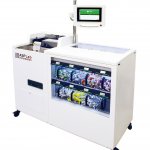
Sponsored • Sample processing
One second, one tube
As the leading supplier for tube identification and sorting devices, ASP Lab Automation AG designed the new generation of their tube sorter ASP SortPro for a throughput of 3.600 tubes per hour.

As the leading supplier for tube identification and sorting devices, ASP Lab Automation AG designed the new generation of their tube sorter ASP SortPro for a throughput of 3.600 tubes per hour.

The academic teaching Karlsruhe Hospital, at the University of Freiburg, is the largest hospital providing tertiary care in the Middle Upper Rhine Valley. Every year, 63,000 in-patients and 180,000 out-patients are treated in the 1,500-bed facility with 50 departments and 30 out-patient clinics. Inevitably, a hospital of this size has a central lab. We spoke with Dr Horst Mayer, managing senior…

Scientists in the life sciences can now benefit from upgrades to a suite of analytical software solutions with new features designed to enhance productivity, confidence and accuracy in numerous fields, including proteomics, food safety and biotherapeutic drug development. The latest suite of software strengthens laboratory workflows across a range of applications through expanded capabilities,…

Like most technologies, X-ray imaging software is evolving, delivering more automation and improved image quality. However, the fundamental imaging basics for radiologic technologists remain unchanged. In this article, manufacturer Carestream provides a helpful review of the imaging basics for rad techs. In today’s digital world, basic functions once performed by the operator are now…
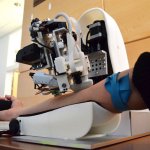
Engineers at Rutgers University have created a tabletop device that combines a robot, artificial intelligence and near-infrared and ultrasound imaging to draw blood or insert catheters to deliver fluids and drugs. Their most recent research results, published in the journal Nature Machine Intelligence, suggest that autonomous systems like the image-guided robotic device could outperform people on…

Each year almost 80,000 new patients in France alone receive fluoropyrimidines, a group of anti-cancer drugs including 5-FU which is normally administered intravenously to treat digestive, breast and head and neck cancer. However, fluoropyrimidines-based chemotherapies can cause severe toxicities (incidence at around 20%) and sometimes lethal toxicity (incidence between 0.1 and 1%) with part of…

Touring the laboratory at the Clínic de Barcelona Hospital, Dr José Luis Bedini revealed how the latest Siemens Healthineers technology has transformed workflow to deliver quicker results, improve efficiency, conserve energy, and thus make the team of technicians very happy! In recent months the Core Lab Operative Area at Hospital Clínic de Barcelona has undergone a transformation due to the…
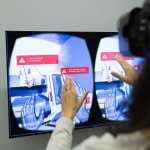
The need to effectively address HCI – Human-Computer Interaction – is emerging as the key challenge in creating a productive and efficient laboratory of the future. The subject was examined in detail by Andreas Schuller from the Fraunhofer Institute for Industrial Engineering, during a conference in Barcelona, which brought together more than 1,000 scientists and technologists.
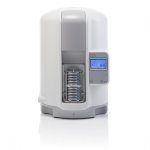
A new benchtop automated reading and incubation system is now available in Europe for antimicrobial susceptibility testing (AST). The new instrument provides microbiology laboratories with the accurate MIC results that clinicians need to confidently select an effective antibiotic for critically-ill patients while safeguarding future patient care through more successful antimicrobial stewardship.…
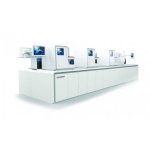
The new Yumizen H2500 is a high-end haematology analyser with CBC, 8-DIFF, NRBC, reticulocytes, optical platelets and Body Fluids (CE). Full automation for demanding haematology diagnostics, can be integrated into the Horiba T6000 conveyor belt solution, with the option of a fully-automatic blood smear and staining unit (Yumizen SPS).
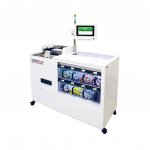
More than 16 years of experience in the complex matter of workflows within clinical labs leads to the latest generation of ASP SortPro tube sorter. To make the investment in sorting devices efficient, these must be integrated perfectly into the workflow. The ASP team sold hundreds of tube sorters to clinical labs and hospitals worldwide. In all these installations the German engineers have…
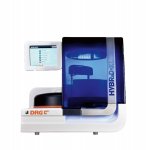
DRG's fully-automated analyzer with unique technology allows the automated determination of niche parameters like Calprotectin, Free Testosterone, Salivary Cortisol, Renin, Aldosterone, Hepcidin and brand new celiac disease tests: anti-tTG and -DGP.

Beckman Coulter announced that the latest addition to its market-leading automation portfolio, the DxA 5000 total laboratory automation (TLA) solution has achieved European CE Mark and China Food and Drug Administration approval. In today’s healthcare environment, laboratories are highly focused on enhancing patient care by driving faster turnaround time, delivering quality results and…

Digitalization offers great potential for hospitals: diseases can be detected earlier, internal processes more efficiently organized, health expenditure reduced and patients better cared for. Artificial intelligence, robotics, sensor technology, big data, additive manufacturing or augmented reality - the technologies for this have long been available.

The Rt Hon Matt Hancock MP, Secretary of State for Health and Social Care, will be launching a new report by the TaxPayers' Alliance (TPA) on introducing more automation in the NHS. As families and businesses face a 50 year high tax burden, the government has a duty to provide good value for money. The NHS is an essential service which needs to see further improvement and less money wasted.…

Nuance Communications, Inc., at its Customer Experience Summit, revealed Project Pathfinder, a breakthrough technology that uses machine learning and Nuance AI innovation to increase the conversational intelligence of virtual assistants (VAs) and chatbots. Project Pathfinder reads existing chat logs and transcripts of conversations between agents and customers within contact centers, and…

The lab-in-the-box design of LabTurbo SP-qPCR All-in-one system offers true automation for the molecular laboratory, the manufacturer reports, adding that this ‘delivers testing confidence and laboratory efficiency. LabTurbo fully automates the complete workflow of molecular diagnostic laboratories. The sample-to-result procedure includes: automatic sample transfer from primary tubes, DNA/RNA…

HORIBA Medical announces that the Yumizen G1500 (open tube) and Yumizen G1550 (closed tube) are now available. These fully automated analyzers can manage the diagnostic and monitoring requirements of clinical laboratories with a mid to high workload. Expanding their field of blood-diseases expertise, directly linked to hematology, HORIBA Medical is now able to offer its customers, dedicated and…
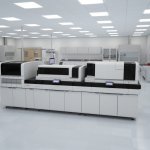
Integrated healthcare provider Primary Health Care has joined forces with Siemens Healthineers to deploy more than 70 Atellica Solution immunoassay and clinical chemistry analyzers. This marks Siemens Healthineers largest contract for in vitro diagnostics testing in Australia, and one of its most robust sales of the Atellica Solution. The analyzers are integrated with Atellica Diagnostics IT…

Often referred to as the ‘Achilles’ heel’ of histopathology, the sample entry has posed considerable challenges in pre-analytics for several decades. We visited the Munich-based lab automation start-up Inveox GmbH. Time-intense, highly manual processes in labs are expensive, error-prone and the most common reason for irregularities in cancer diagnoses. In Germany alone, every year hundreds…

Inpeco FlexLab automation (Inpeco brand FlexLab) is now connected with Sebia Capillarys 3 TERA, Sebia’s latest generation capillary electrophoresis instrument.

Clinical laboratories need to meet greater testing demands, improve efficiency, and deliver reliable, high-quality results, while at the same time, facing an increasing shortage of skilled employees and growing budget constraints. Both patient and physician satisfaction are frequently tied to the time it takes to receive lab test results. In a recent survey commissioned by Siemens Healthineers,…

The need to ensure that laboratory medicine can meet the future challenges of a rapidly changing healthcare environment sits at the core of an innovative strategic conference for this sector. The agenda of the European Federation of Clinical Chemistry and Laboratory Medicine (EFLM) Strategic Conference in Mannheim (18-19 June) highlighted the challenges, and also outlined areas of discussion to…
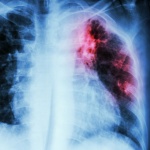
AI-based applications will replace radiologists in some areas, the physicist Bram van Ginneken predicts. ‘The profession of radiologist will change profoundly,’ predicts Gram van Ginneken, Professor of Medical Image Analysis at Radboud University Medical Centre. The cause is automatic image analysis by computers (first published in a paper in 1963) and deep learning.

At the 28th European Congress of Clinical Microbiology and Infectious Diseases (ECCMID 2018), Fast Track Diagnostics, a Siemens Healthineers company, launches a new molecular thermocycler, the Fast Track cycler, and the complementary new FastFinder software. The Fast Track cycler is a compact platform that enables laboratories of all sizes to implement molecular testing with simplicity and speed…